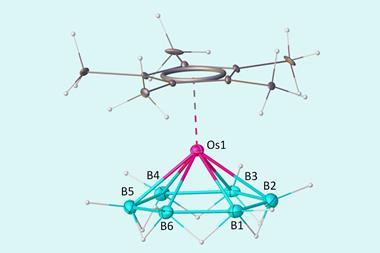Historic wall paintings could be restored, thanks to an innovative nanoparticle coating
Mike Brown/Nuremberg, Germany
New inorganic nanoparticles that simultaneously restore and preserve ancient artworks have been developed by researchers in Italy. Many types of cultural heritage could be treated using this method, without causing further damage over time unlike some currently used polymer coatings, they say.
Preservation and restoration of artwork is important, as paintings such as frescos give us important glimpses into history. A standard method used by conservationists for protecting frescos is to apply an acrylic polymer coating, but such coatings can turn yellow, giving a plastic appearance and damaging the artwork in the long term.
Piero Baglioni and colleagues at the University of Florence, have developed alkali metal hydroxide nanoparticles that can be applied to frescos and other pieces of art that not only provide a protective barrier against further damage, but can also help restore them to their former glory.
Talking to Chemistry World at the 3rd EuCheMS Chemistry Congress, in Nuremberg, Germany, Baglioni explains that most wall paintings and monuments are made out of limestone - a sedimentary rock composed largely of calcium carbonate. When damaged by water, ’calcium carbonate is chemically converted into calcium sulfate and during this reaction you lose the painting,’ he says.
The team has developed calcium hydroxide nanoparticles that react with carbon dioxide in the air to form calcium carbonate - to replace what has been lost due to water damage. ’During this chemical process you have consolidation of the painting and stabilisation of the work of art,’ Baglioni says. This extra calcium carbonate can also help reverse some of the damage caused by the calcium sulfate - this restoration process is something none of the current coatings are able to do.

The coating is very easy to use, the nanoparticles are first dispersed in propanol - a non-toxic solvent - and then sprayed or brushed onto the surface of the artwork. In cases where the surface is very fragile, Japanese paper - very thin porous paper - is laid on top of the painting to protect it from damage, allowing a thin coating to be applied through the pores.
’We produced calcium, strontium, barium and magnesium hydroxide nanoparticles, and each of these are useful for different purposes. For example you can use magnesium and calcium hydroxide for the conservation of paper, wood or cellulosic based materials,’ Baglioni states. He believes the nanoparticle method can be used to protect most surfaces, apart from metal.
’The work is not trying to reinvent the wheel, but marry tradition and innovation by taking a concept that was developed in the 1970s and improving on it by combining the most modern aspects of nanotechnology, so that it can be more effective,’ says Francesca Casadio, senior conservation scientist at the Art Institute of Chicago, in the US. ’I can see this really becoming an important avenue for treatment of wall paintings and I really hope there will be more technology from the world of nanotechnology for conservation,’ she adds.
’We use this method in the jungle in Mexico, where there is no electricity. They just brush over the paintings - it is very simple. Hopefully, eventually all conservators will use this method as it is simpler and safer for the works of art and the conservator,’ Baglioni concludes.
References
et alChem. Eur. J.,16, 9374 - 9382. (DOI: 10.1002/chem.201001443)






No comments yet